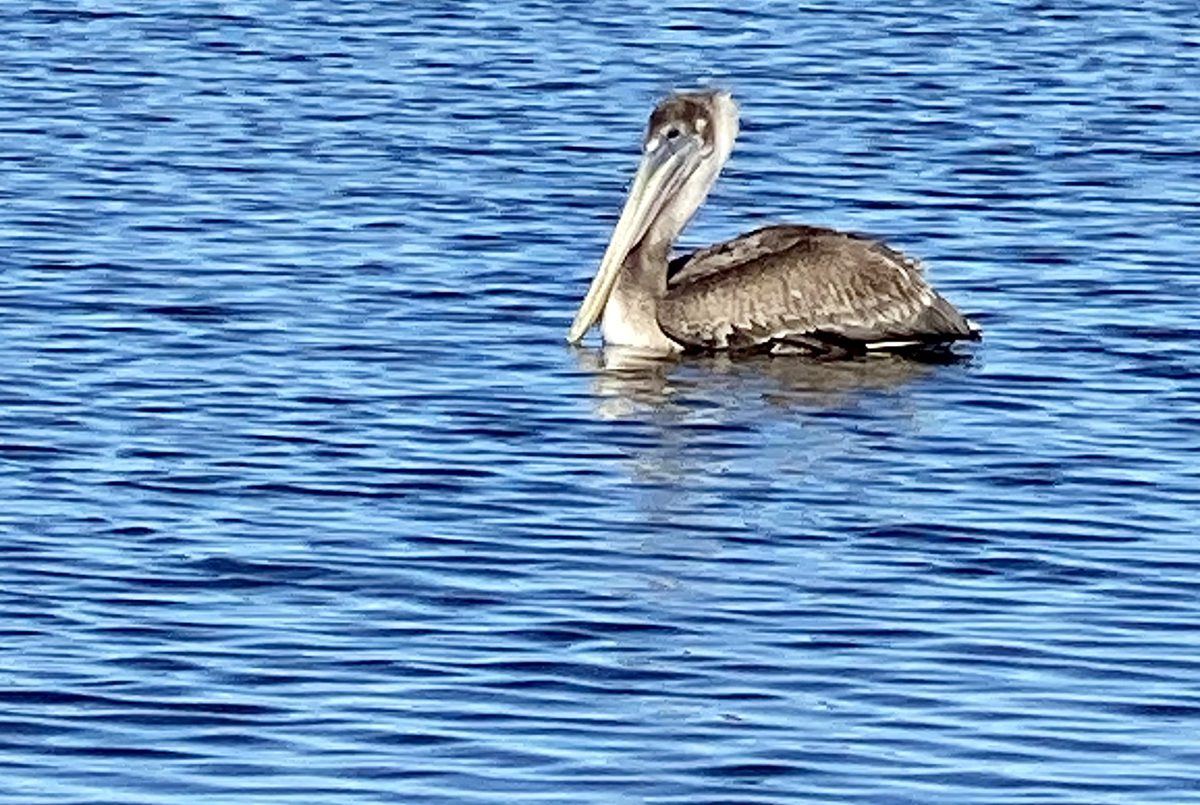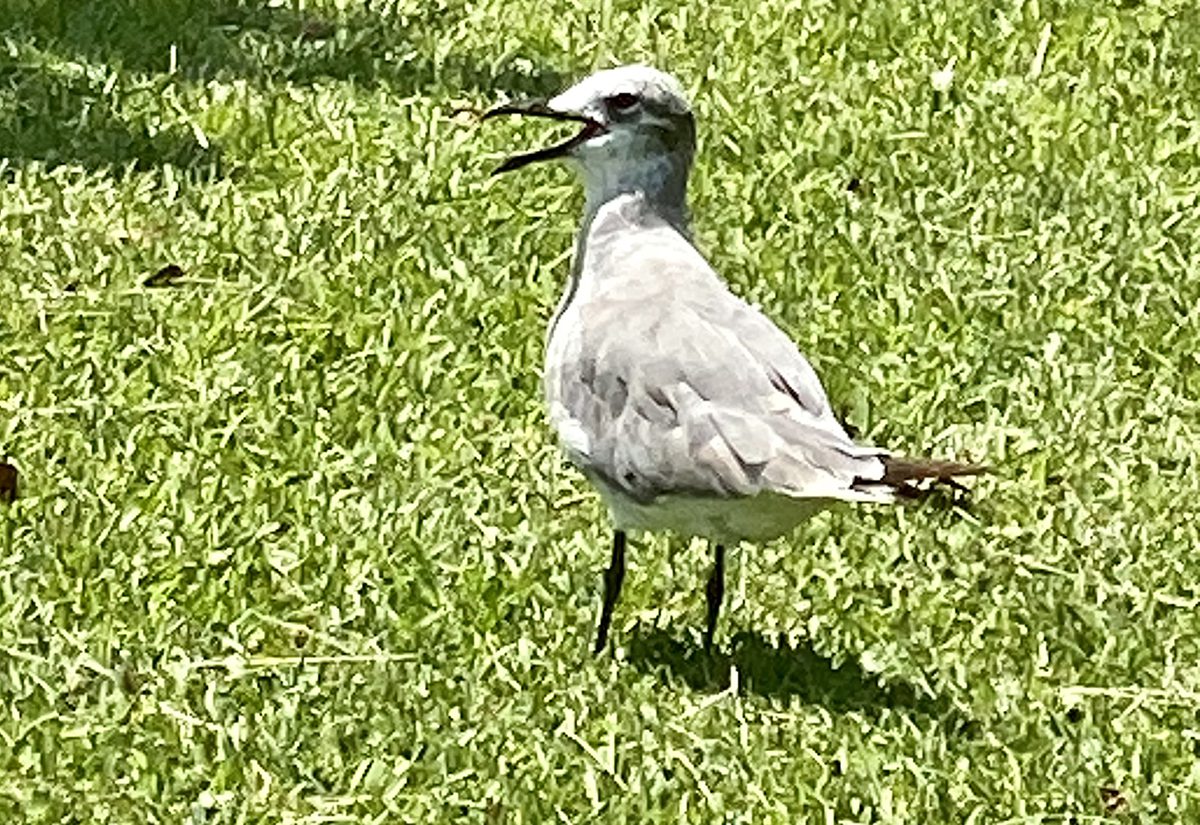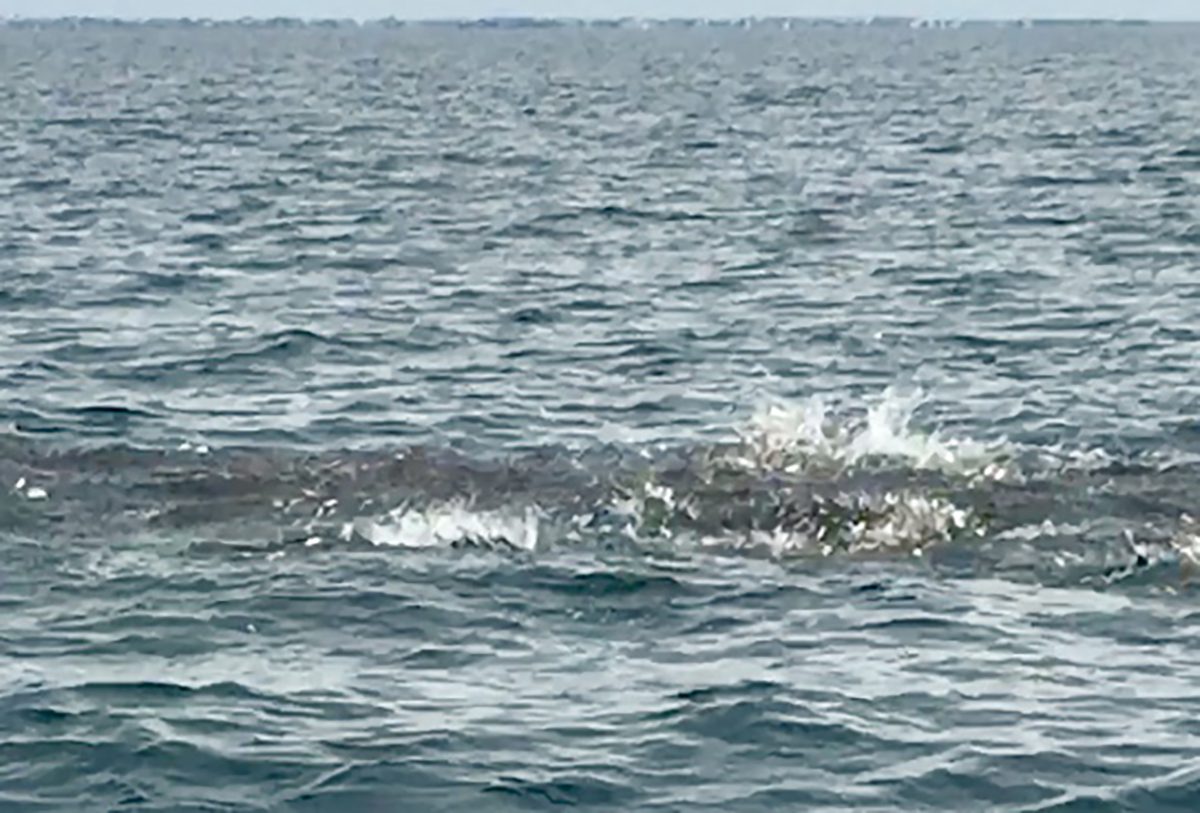
There are some old fishing maxims that people throw around a lot, and a lot of them are misunderstood.
One in particular that really confuses people is, “Just follow the birds.”
Supporter Spotlight
I’ve been riding in the boat with novice anglers as they point out every bird they see as if that will lead them to the Promised Land. While it is true that birds tell us a lot of what is going on out there, it’s important to understand what each type of bird is, how it fishes, and what it means to us as anglers.
Let’s go through the most popular ones that we’ll see on our coast on any given day.
Pelicans
We’ll start with perhaps our most unusual bird, the pelican. As noted by American poet and journalist Dixon Lanier Merritt, “Oh, a wondrous bird is the pelican! His beak holds more than his belican.”

As we see them skimming the wavetops or gliding across a causeway, they are always looking into the water. They can see schools of fish a foot or two under the water and unerringly dive on top of them and scoop them up into their balloon-like bills. I have often seen them diving without a gamefish of any kind for miles in any direction. However, they can be helpful.
I was with a friend fishing a shoreline in the New River near Sneads Ferry and not having much luck. I noticed pelicans diving on mullet schools well out away from the shore. I could see mullet skipping every which way as the pelicans would fly over. We casually cruised over to the area and started making casts with our topwater plugs. We both hooked up on solid speckled trout almost right away and continued to do so the rest of the day.
Supporter Spotlight
Another time that pelicans can help us is during the fall migrations. When large concentrations of glass minnows are running the beach, you might see pelicans diving on them. Look for the cloud of bait in the water. If you’re really lucky, you may see them doing what I call “rafting,” where a dozen or more will be sitting on the surface just dipping their beaks into a bait ball of glass minnows or bay anchovies. Either of these situations is often accompanied by schools of feeding false albacore, bluefish or Spanish mackerel, and it’s worth throwing a small jig or minnow imitating fly.
So, the moral here is, if you’re not doing very well, and trying to figure out where your next cast should be, at least let the pelicans tell you where the bait fish are, and hopefully something bigger will be just behind.
Shorebirds
Next is wading birds: herons, egrets and other shorebirds. While not necessarily a bird you’ll be searching for, if you are fishing in a creek or marsh and wondering if there’s any life there, a heron wading the shoreline will at least alert you to the presence of small baitfish. This can be just the sign you need to make a few casts.

I have even pulled into a canal with docks and lifts and was just about to turn around when I saw a heron. I stopped and made “One More Cast.” Boom! A redfish ate my soft plastic jerkbait and I stayed there and caught fish until the tide ran out two hours later. It doesn’t happen a whole lot. But it’s worth paying attention.
Arctic terns are present here most of the summer. They are helpful to a point. They will definitely alert you to the presence of baitfish. But since they can dive under and pick them off with no help from below, they are not always good indicators of gamefish activity below.
Having said that there will be times in the summer when you will see terns diving and Spanish mackerel breaking the surface sporadically. Trolling is a good option in these situations because the fish will be spread out. I still prefer casting a small spoon or fly.
Other seabirds
Another bird that dives deep on small fish is the gannet. These will show up in our waters in late fall as larger schools of menhaden begin to arrive. They will dive from pretty high, cross their wingtips behind them, and enter the water like an Olympic diver. Often, they can go down to depths exceeding 70 feet.

Gannets are a good indicator of menhaden. Northeast striped bass fishermen love them because it will lead them to striped bass and big bluefish. Sometimes large red drum will be under our menhaden schools and possibly king mackerel. But it’s not a guarantee.
I’ve caught more sharks on jigs bumped under these schools than anything else.
Gulls are the No. 1 bird that anglers should concern themselves with.
In the summer we will see a lot of the laughing gulls, they have black heads and make that distinctive “laughing” call. Later on in the summer and into fall, we will see the little gray gulls called ring-beaked gulls.
If you are driving your boat across the water and look up to see a flock of gulls walking along the avenue, it’s worth checking out. They are voracious feeders and are always on the lookout for an easy meal. That means that they don’t often dive into the water like gannets or terns, but when a school of gamefish has baitfish on the move, they will notice and be right there when the minnows push out of the water to escape the jaws below. It is the gulls who will be there to pick up the ones the fish miss out on. It’s pretty frantic.
I always tell people to look for gulls “dancing” on the surface. This is when it’s really on. The action below is so frantic that the gulls don’t even want to pick up and fly up but want to stay as close to the surface as they can. This is a sure sign of false albacore, bluefish, or Spanish mackerel and will often lead to a day full of memories, which is what it’s all about really.







